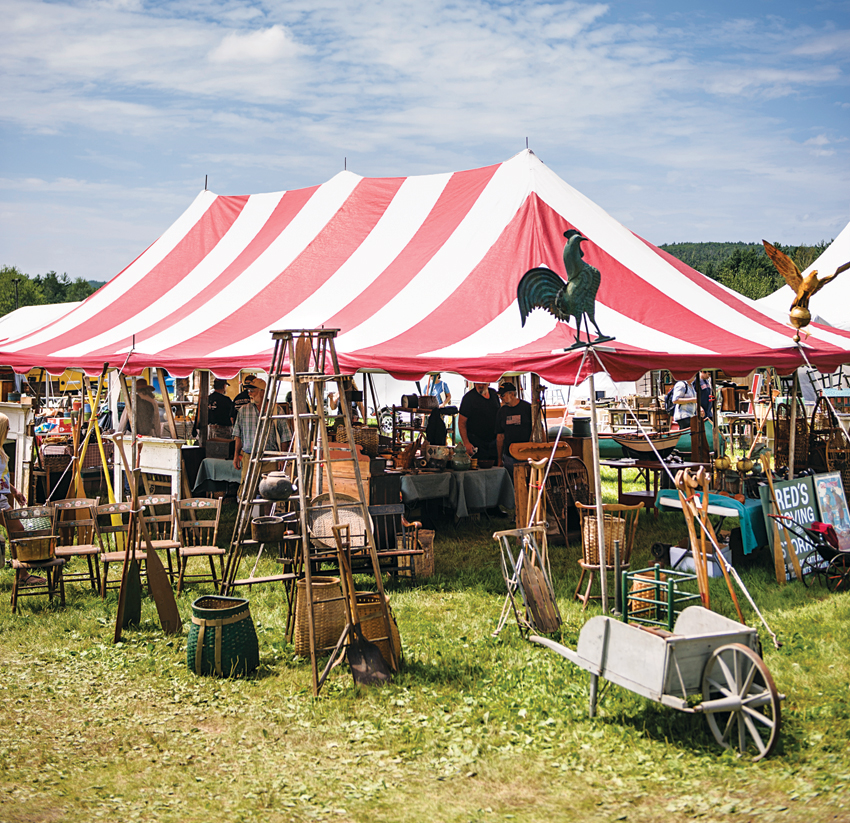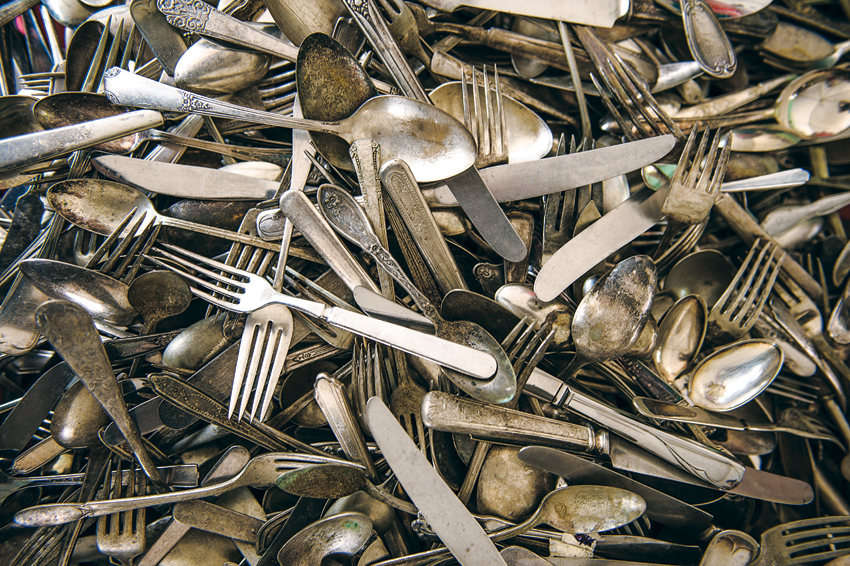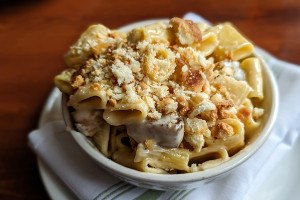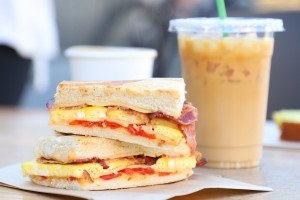Flea Market to Table

photograph by mark fleming
It’s 11 a.m. on a Tuesday morning in July and I’m sitting in a grassy parking lot, eating a picnic lunch of roast-beef-and-horseradish subs, brown-butter Rice Krispies treats, and fat plums that have been served buffet-style out of the back of a 14-foot UHaul truck. With me is chef Nookie Postal (the driver of said truck), his restaurant-design architect Eric Robinson, and his friend Sally Peterson, of PBS’s This Old House.
We’re taking a break from a morning spent at the Brimfield Antique Show, in the central Massachusetts town of the same name, where Postal and his team have been on the hunt for items to furnish Commonwealth, the market/restaurant hybrid concept he’ll soon open in Kendall Square.
In time, Craigie on Main chef-owner Tony Maws strolls by—his wife, a handful of employees, and his own haul of Brimfield finds in tow—and steps into the UHaul to admire Postal’s acquisitions: a brushed-zinc tub (soon to become a raw bar), a weathered, Hoosier-style hutch (a coffee-condiment station), and a honey-hued industrial desk (a host stand). Maws tells us about his own purchases for his new spot, the Kirkland Tap & Trotter: lab stools (bar seating), a cart of steel letters (décor), and one large mermaid figurine (who knows).
With restaurant owners trying more than ever to create interiors with a unique identity, many of them are eschewing the humdrum uniformity available at big-box furniture chains, and are instead seeking a touch of authentic, industrial charm and personality with vintage finds. Which is why they’re all shopping at Brimfield. Steel & Rye, Belly, the Gallows, and Area Four are just a few of the local spots that found elements of their interiors at the flea market, which stages its final fair of the season September 3 through 8.
“I wanted this really rustic feel, so for that you have a few options—you can build it, you can buy it already built, or you can find it,” says Postal, who will be heading back this month. “And the best place to find it is at this giant flea market—it’s the way to add character and save money.”
It’s true that restaurants relentlessly talking up their “reclaimed barn doors” and “reused antique stoves” can get annoying mighty fast—these days, Robinson points out, “anything ‘re-’ is good”—but beyond the buzzwords, antiquing makes economic sense for restaurant owners. Postal tells me that he’s bought 20 items during his two trips to the fair, saving upward of $50,000 by avoiding custom-built pieces and prefab items.
And, of course, antiques come with a narrative that a piece from Restoration Hardware simply cannot provide. “I want to know where our coffee station came from—I want to know what it used to be doing,” Postal says. “Now it’s going to get a new life doing something totally different, and that’s really cool.”

photograph by mark flemming

photograph by mark flemming

photograph by mark flemming

photograph by mark flemming



